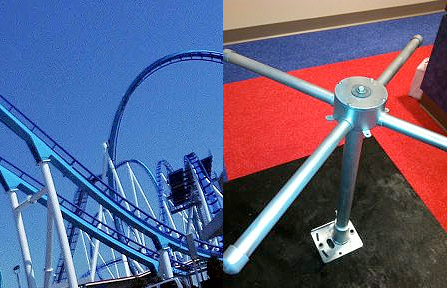 Inbound marketing has become the leading methodology used
for online business promotion. Unlike outbound marketing, which pushed
advertisements, direct mail and other traditional forms of marketing to the
customer, inbound marketing is all about attracting potential customers by
engaging them with online content first and then transitioning them to the
point they buy from you and would recommend you to a friend. However, there are
two major cogs in the gears that make inbound marketing work. The first has to
do with engaging content and the other has to do with transitioning prospects
to customers. Let’s take a look at both.
Inbound marketing has become the leading methodology used
for online business promotion. Unlike outbound marketing, which pushed
advertisements, direct mail and other traditional forms of marketing to the
customer, inbound marketing is all about attracting potential customers by
engaging them with online content first and then transitioning them to the
point they buy from you and would recommend you to a friend. However, there are
two major cogs in the gears that make inbound marketing work. The first has to
do with engaging content and the other has to do with transitioning prospects
to customers. Let’s take a look at both.
Blogs have been all the rage for content marketing for some
time now. But if you are a company with a few service or product offerings,
just how much can you blog about them? You can only say so much, right? And
having something new to say is imperative if you are going to use them to drive
traffic to your web site. The University of Massachusetts Dartmouth Center for
Marketing Research reported that in 2014, only 21% of Fortune 500 companies had
a public-facing blog. That had dropped from 38% just one year earlier. In fact,
a new marketing term had emerged for social media sites – micro-blogs. I
believe social media has its place in inbound marketing. It is key to finding
people who have an interest in what you are selling and making the link to your
content, but they are typically a poor substitute for content marketing, which
is rich in subject matter. For one, it’s impossible to fit all I would need to
say in this blog article into a tweet. So what gives? How do you sustain this
key information on a format that will help you gain new customers?
I have taken a different approach to blogging with many
customers of ours. We build content based upon two aspects of business: solving
problems and customer satisfaction. We don’t try to describe a product or service
for the sake of selling, per se. We describe it in terms of how it solved a
problem for a customer. Let me give you an example. Let’s say you are selling
heavy power equipment and you have a backhoe for sale. I could write a blog
article about all of the features of the backhoe, but it would be more engaging
if I wrote a story where the backhoe saved the day. Let’s say there was a
water main break in the middle of the night on a Monday. All the people living
in the vicinity would be without water when they woke up ready for the week.
There was a crisis. What needed to happen? The earth needed to be moved so the
pipeline could be repaired and it had to happen quickly – alas! Here comes the
backhoe to save people from leaving home in a bad mood because they didn’t
have water. The backhoe customer – the operator – has a great deal of
satisfaction. He has just averted a public relations nightmare. Now that is
engaging content. Your blog should be built upon this type of story.
The other issue with inbound marketing has to do with
transitions between just being aware of your brand to actually buying it for
the first time, and then to purchasing it again. Think of it as going to an
amusement park and watching waves of people on a roller coaster. Watching the
people ride past you is akin to taking a look at content on a web site. Deciding
that you will get on the roller coaster and take a ride for yourself is
something entirely different. Think of transitions in inbound marketing like
those turnstiles you walk through when you are standing in line to get on a
ride. There is a point of showing more commitment than merely watching the
roller coaster. What are you trying to accomplish in marketing? To get to a
sale, correct? When inbound marketing is working correctly, you are capturing
information on the people who are looking at your content and giving them a
reason to buy from you. We always want to give someone a next step – or
a turnstile - when we are using content
as a marketing tool. This can be as simple as signing up for more content (in
which case you have captured, at the least, an email address) or it can be
enticing them to click deeper into your web site, giving them links that lead
them to a landing page for specific products, asking them to click for a sales
representative, engaging them in online chat about their particular needs,
hitting a contact form, etc.
Content is great, but it has to lead to a sale eventually or
it is wasted effort. Build transition points into your content marketing. Some
think this to be taboo – too old school for today’s sophisticated customer. I would
dispute this thought. There is nothing worse than not being able to click to
what I want on a web site. Transitions make sure those options are available to
your prospective customer.